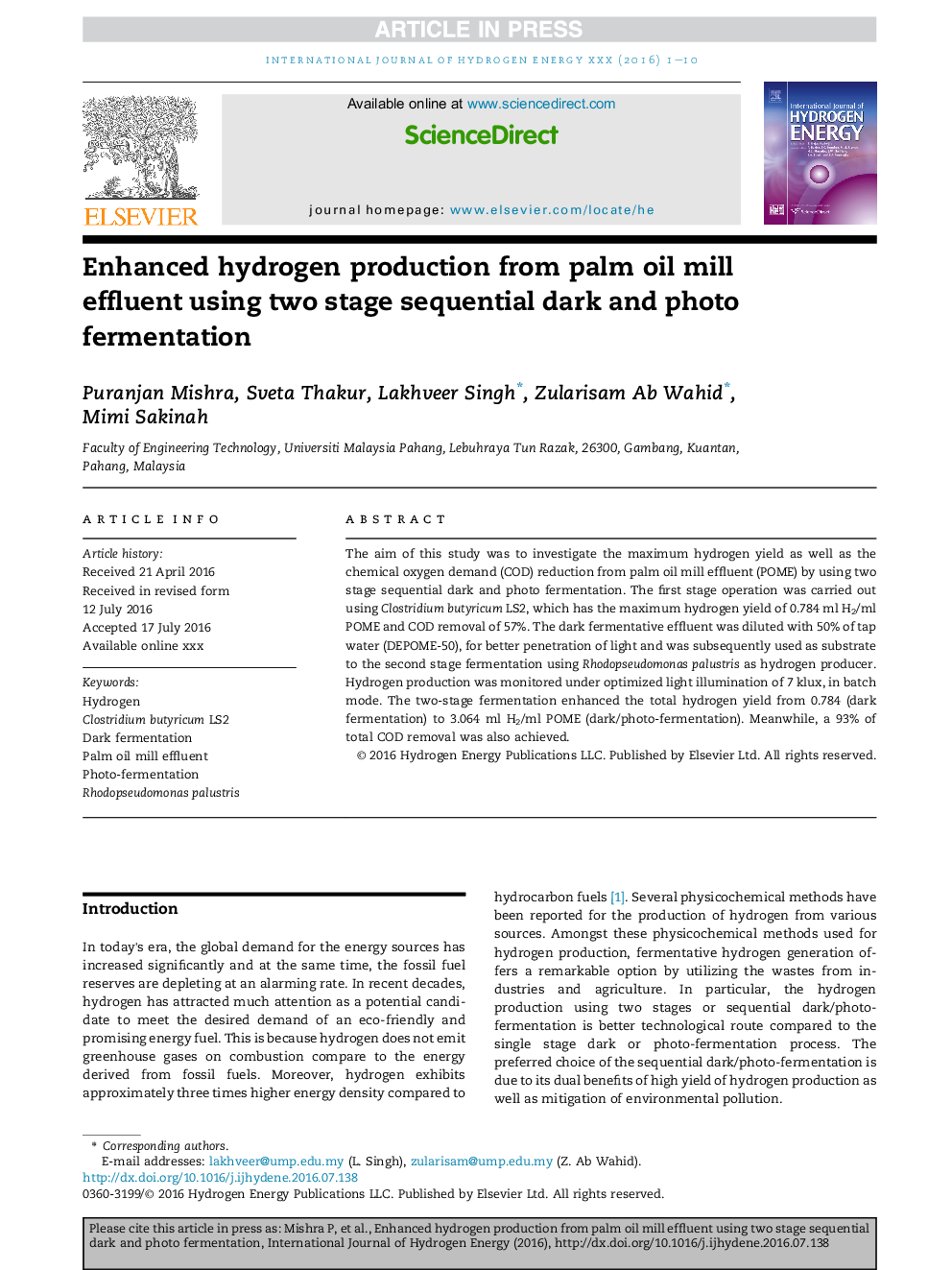| Article ID | Journal | Published Year | Pages | File Type |
|---|---|---|---|---|
| 5147391 | International Journal of Hydrogen Energy | 2016 | 10 Pages |
Abstract
The aim of this study was to investigate the maximum hydrogen yield as well as the chemical oxygen demand (COD) reduction from palm oil mill effluent (POME) by using two stage sequential dark and photo fermentation. The first stage operation was carried out using Clostridium butyricum LS2, which has the maximum hydrogen yield of 0.784Â ml H2/ml POME and COD removal of 57%. The dark fermentative effluent was diluted with 50% of tap water (DEPOME-50), for better penetration of light and was subsequently used as substrate to the second stage fermentation using Rhodopseudomonas palustris as hydrogen producer. Hydrogen production was monitored under optimized light illumination of 7Â klux, in batch mode. The two-stage fermentation enhanced the total hydrogen yield from 0.784 (dark fermentation) to 3.064Â ml H2/ml POME (dark/photo-fermentation). Meanwhile, a 93% of total COD removal was also achieved.
Keywords
Related Topics
Physical Sciences and Engineering
Chemistry
Electrochemistry
Authors
Puranjan Mishra, Sveta Thakur, Lakhveer Singh, Zularisam Ab Wahid, Mimi Sakinah,
